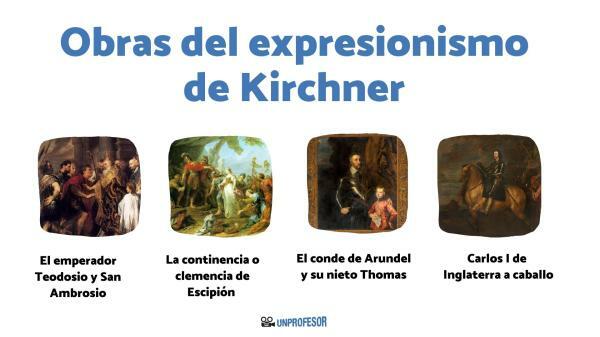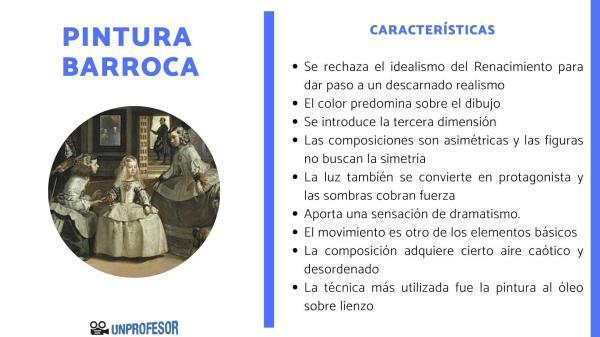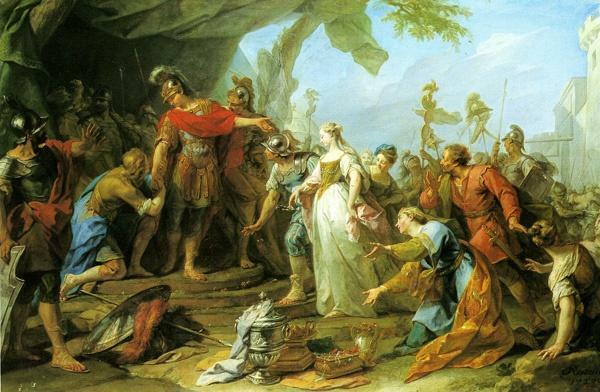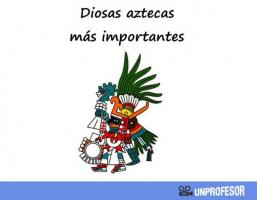4 most important works by Anton VAN DYCK

Between the Most notable works by Anton Van Dyck We highlight The Emperor Theodosius and Saint Ambrose (1619-1620), "The Continence of Scipio" (1621), "The Earl of Arundel and His Grandson Thomas" (1635), "Charles I of England on Horseback". Some works that illustrate us about the style and themes characteristic of Van Dyck and that we show you here at unPROFESOR.com.
Anton Van Dyck (1599-1641) was one of the most notable Flemish painters, receiving great recognition for his portraits of the Genoese and English nobility, being a portrait painter of King Charles I, in addition to his paintings of mythological and biblical themes. Van Dyck was also noted for his notable influence on the work of English artists such as Thomas Gainsborough or John Singer Sargent.
In this lesson from unPROFESOR.com we offer you a tour of the works by Anton Van Dyck, one of the great Baroque painters.
Index
- What are the main characteristics of Van Dyck's work?
- Emperor Theodosius and Saint Ambrose (1619-1620)
- The continence or clemency of Scipio (1621), one of the masterpieces of the Baroque
- The Earl of Arundel and his grandson Thomas (1635)
- Charles I of England on horseback, one of the portraits of the king made by Van Dyck
What are the main characteristics of Van Dyck's work?
Before knowing the most important works of Anton Van Dyck, it is interesting to highlight the most striking features of his artistic production:
- One of the main characteristics of this great Flemish painter is the use of fluid brush strokes, in addition to his taste for bright and clear colors.
- His work is elegant, managing to print a refined and serene style in the portraits of him. A way of painting that he created a school as far as portraits of him are concerned. He created this style in Italy, capturing those portrayed with a proud and stylized bearing that matched the taste of the time and was considered a model for European painting at that time.
- Van Dyck was considered one of the great portraitists of the Baroque, finding a dedicated audience among nobles and kings.
- He was disciple of Rubens, assimilating his style and technique in a remarkable way. Rubens's serene style is one of his most notable characteristics, moving away from the violent realism typical of Dutch painters.
- Van Dyck is meticulous and detailed using the oil technique for this. A technique that allowed him to print verisimilitude and detail in shapes and textures. Oil paint also provided fluidity in the brushstroke and, although it was not a technique invented by the Flemish painters, they were the ones who developed and spread it throughout the 15th and 15th centuries. XVI. In addition, this technique allowed the application on fabric, storage and transportation of the works.
- Among the topics discussed by Van Dyck, the religious and mythological themes, historical themes and portraits.
- In addition to the half-figure portrait, Van Dyck resorted to full length portrait, influenced by Tizziano, and made the triumph of double portrait. A type of portrait in which the attitude of the two characters portrayed is contrasted.
- Van Dyck was a great painter and notable engraver achieving relevance both as a painter and for engravings such as the series of engraved portraits of famous people of his time, Iconography.

Emperor Theodosius and Saint Ambrose (1619-1620)
This is one of Van Dyck's most important works. In this sacred painting, Van Dyck represents the meeting between Theodosius I and the archbishop of Milan, Ambrose. A topic already covered by Rubens, his teacher, although there are notable differences between both artists.
Van Dyck's brushstroke is more vigorous and energetic, introducing other details such as a more detailed architectural background, as well as the representation of the folds of clothing.

The continence or clemency of Scipio (1621), one of the masterpieces of the Baroque.
The theme of this work, taking of Carthage by the Roman general Scipio, resist the advances of a beautiful woman. A scene whose ultimate object is to demonstrate the integrity of the Roman general.
Van Dyck represents the theme being very skillful in representing beauty and sumptuousness and elegance of all the details. Thus, the painter offers us a work full of details and an excellent composition, in addition to use color masterfully by imbuing the scene with great drama thanks to the use of tones warm.
The history of the painting is also fascinating as it went from being a painting in the collection of King Charles I of England to being in the Alcázar collection when it was acquired by the king of Spain after the execution of the English king in 1649.
In this lesson from a Teacher we discover the characteristics of baroque painting.

The Earl of Arundel and his grandson Thomas (1635)
This oil on canvas represents the Earl of Arundel, English diplomat, collector and patron, who is accompanied by his grandson, Lord Maltravers' first-born son. After his work as a portrait painter in Italy, Van Dyck arrived in England and became the portrait painter of numerous figures from the court, the nobility and the king himself.
He became a highly sought after artist even having to hire assistants to respond to the high demand for work. The portraits are usually full-length like the one in question, also making seated or half-bust portraits like the portrait of Dorothy Savage, Viscountess Andover and her Elizabeth sister, Lady Thimbleby.

Charles I of England on horseback, one of the portraits of the king made by Van Dyck.
We continue to learn about the best and most important works of Anton Van Dyck to talk about this monumental work which has dimensions of 367x292 centimeters. An equestrian portrait depicting King Charles I of England on horseback, while a servant passes him a helmet so that he can complete his armor.
The painting is elegant, detailed and majestic in which the magnificence of the king contrasts with the dramatic end of the protagonist. The king, considered a tyrant and enemy of the nation, ended up being beheaded.
Van Dyck carried out the work with very subtle colors, using flat and dark tones achieved thanks to the degradation of the pigments used. The king is represented with all the dignity that comes with being both king and emperor of the British and a Christian warrior. Van Dyck's style and elegant technique marked a revolution in British portrait painting.

If you want to read more articles similar to Anton Van Dyck: most important works, we recommend that you enter our category of History.
Bibliography
- DÍAZ PADRON, Matías. Van Dyck: the influence of the portrait of Rubens' most prestigious disciple on Spanish painting of the 17th century. Yearbook of Atlantic Studies, 2008, vol. 2, no. 54, p. 229-263.
- MARTIN GÓMEZ, Margarita. Van Dyck: The ambassador of the courtly portrait, https://commons. wikimedia. org/wiki/File: Johann _Sebastian_Bach. jpg? uselang= en, 2020.



